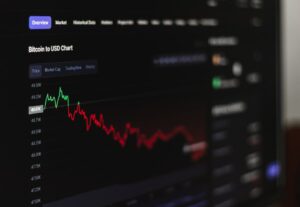Understanding Swap Fees in Forex: A Comprehensive Guide for Beginners
When it comes to trading in the foreign exchange market (forex), there are various costs involved that traders need to be aware of. One such cost is the swap fee, also known as the overnight fee or rollover fee. In this comprehensive guide, we will delve into the details of swap fees in forex and help beginners understand how they work and how they can impact trading decisions.
What is a Swap Fee?
In forex trading, a swap fee refers to the interest rate differential between the two currencies in a currency pair. Since forex trading involves buying one currency and selling another simultaneously, traders are essentially borrowing one currency to buy another. As a result, they are subject to the interest rates of the respective currencies.
Swap fees are charged for positions held overnight or over the weekend, as the forex market is closed during these periods. The fee is calculated based on the interest rate differential between the two currencies and the size of the position held.
How are Swap Fees Calculated?
Swap fees are calculated based on the interest rate differential between the two currencies in a currency pair and the size of the position held. The interest rate differential is determined by the central banks of the respective countries and can be positive or negative.
If the interest rate of the currency being bought is higher than the interest rate of the currency being sold, the trader will receive a positive swap fee. Conversely, if the interest rate of the currency being bought is lower than the interest rate of the currency being sold, the trader will incur a negative swap fee.
The size of the position held also affects the swap fee. The larger the position, the higher the swap fee will be. Swap fees are typically quoted in pips, which is the smallest unit of measurement in forex trading. Traders can calculate the swap fee for their positions using the formula provided by their broker or by using online swap calculators.
Why Do Swap Fees Exist?
Swap fees exist in forex trading because of the interest rate differentials between currencies. Central banks adjust interest rates as a monetary policy tool to control inflation and stimulate economic growth. Higher interest rates attract foreign investors, leading to an increase in demand for the currency and appreciation in its value.
Swap fees serve as compensation for the interest rate differential incurred by traders when holding positions overnight. They also help maintain the equilibrium between the interest rates of the two currencies in a currency pair.
Factors Affecting Swap Fees
Several factors can affect swap fees in forex trading. Firstly, the interest rate differential between the two currencies is a significant factor. If the interest rate differential is large, the swap fee will be higher. Conversely, if the interest rate differential is small, the swap fee will be lower.
Another factor that can affect swap fees is market conditions. During times of high volatility or economic uncertainty, central banks may adjust interest rates more frequently, leading to fluctuations in swap fees.
Furthermore, the type of trading account can also impact swap fees. Some brokers offer Islamic accounts that are compliant with Shariah law and do not charge swap fees. These accounts are designed for traders who follow Islamic principles, which prohibit earning or paying interest.
Managing Swap Fees
Traders can manage swap fees in several ways. Firstly, they can choose currency pairs with lower interest rate differentials. This means selecting pairs where the interest rates of the two currencies are closer together, reducing the swap fee.
Secondly, traders can close their positions before the end of the trading day to avoid incurring swap fees. This strategy is known as day trading and involves opening and closing positions within the same trading day.
Lastly, traders can also consider using hedging strategies to reduce the impact of swap fees. Hedging involves opening a position in the opposite direction to an existing position, thereby offsetting the swap fee.
Conclusion
Understanding swap fees is essential for beginners in forex trading. These fees are an integral part of holding positions overnight and can impact trading profitability. By considering the factors affecting swap fees and implementing appropriate strategies, traders can effectively manage these fees and make informed trading decisions.
It is crucial for beginners to research and choose a reputable broker that provides transparent information about swap fees. By staying informed and continuously learning about the various costs involved in forex trading, beginners can enhance their trading skills and increase their chances of success in the forex market.





